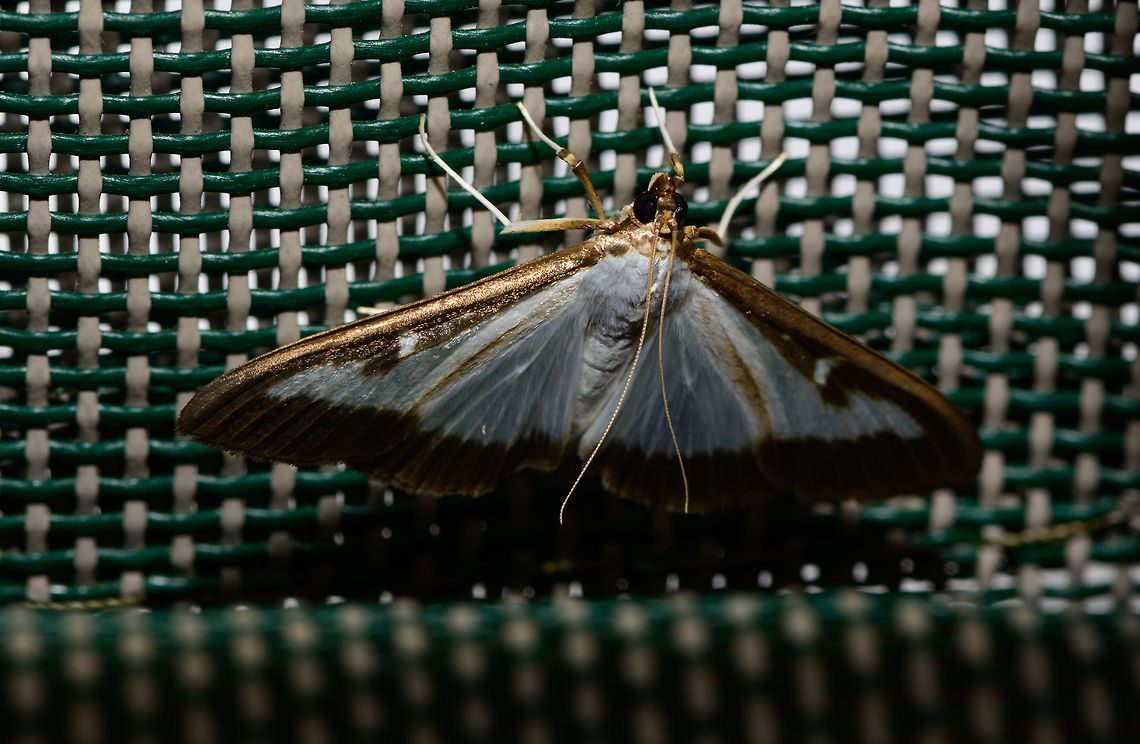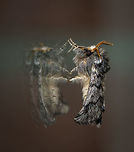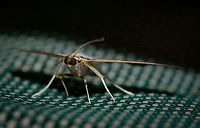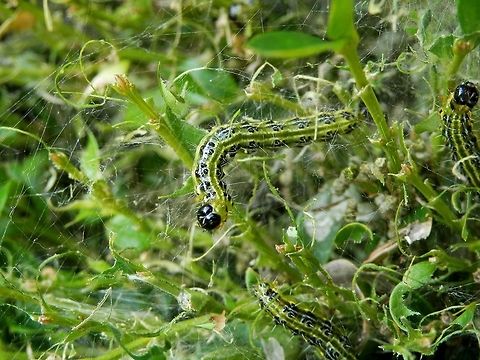 Country intro
Country intro
Box tree moth adult, Heesch, Netherlands
Well well well. The two most prominent moths I found during my moth light trap last weekend also happen to be the two main pests. First, there's this:

Infamous throughout the Netherlands. And this box tree moth is locally even more infamous. It is a fairly recently introduced Asian species that is spreading like wildfire as dutch people have exactly the plants they need in their gardens and the species has not yet encountered any serious natural enemies, although birds are adding the larvae to their diets.
In the small town where I live, this species' impact is extremely visible. Pretty much any buxus plant (not sure if that translates to english) is reduced to shatters.
And just like with the other find of the oak processionary, they are stunning creatures to see as adults.


Cydalima perspectalis or the box tree moth is a species of moth of the family Crambidae. It is native to eastern Asia (Japan, China, Taiwan, Korea, the Russian Far East and India) and introduced in Europe.
